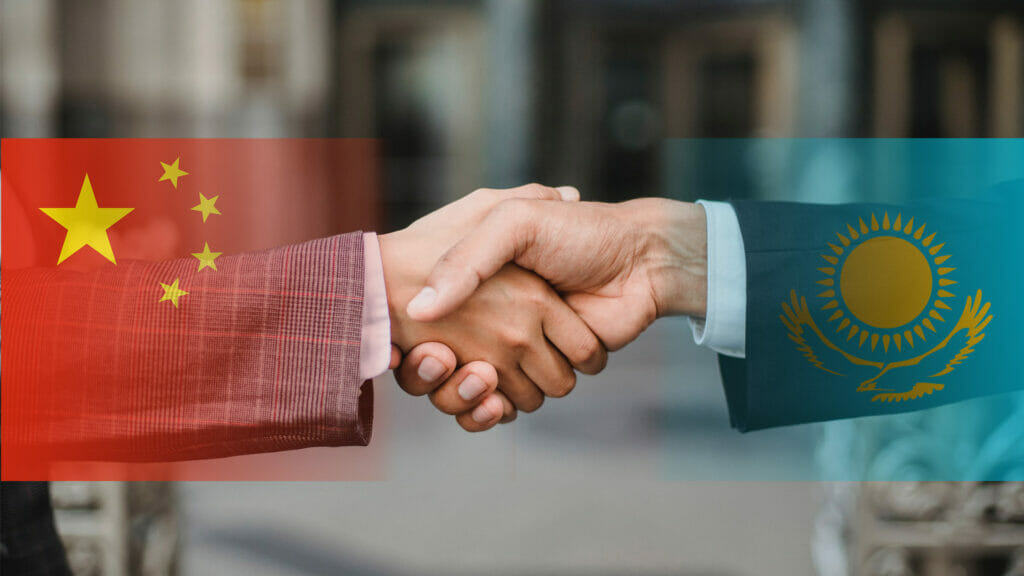China to replace Russia as key trading partner of Kazakhstan by 2030

According to Serik Zhumangarin, deputy prime minister and minister of trade and integration of Kazakhstan, anti-Russian sanctions imposed by Western countries are a huge obstacle to free trade in Central Asia and Kazakhstan. In an interview with Bloomberg, he predicted that China may surpass Russia and the EU in terms of trade turnover with the region by 2030.
So far, despite constantly growing trade with China, Russia has been the biggest trading partner of Kazakhstan since 1991, when the latter became independent. However, as long as sanctions imposed by Western countries against Russia for its invasion of Ukraine are in place, new trading opportunities are opening for China. As Zhumangarin noted, Kazakhstan’s Eastern neighbor is capable of reaching the current amount of Kazakhstani-Russian trade in just several years. The increase in bilateral trade is driven by China.
Last year, the trade between Kazakhstan and China grew by a third and reached $24 billion. This is just $2 billion less than the turnover between Kazakhstan and Russia. During the last meeting with President Xi Jinping President Kassym-Jomart Tokayev said that Kazakhstan wants trade between the two countries to be increased to $40 billion. Apparently, the Chinese want the same. Tellingly, when President Xi decided to restart international traveling after the COVID-19 pandemic, he chose Kazakhstan and Uzbekistan as the first countries to visit.
«Even though many Western countries from Italy to Australia have revised their relations with China, Central Asian states may find it very difficult to resist the gravity of the second-largest global economy,» the media outlet said.
However, Zhumangarin also noted that Kazakhstan is trying to adopt the new economic reality. Even though the country hasn’t recognized Russian claims for Ukrainian territory and is complying with anti-Russian sanctions, its trade turnover with its Northern neighbor grew by 10% in Q1 2023. This growth is mainly based on the re-export of high-tech products. In the first six months of 2022, the amount of such exports increased from $15 million to $184 million. As a result, the U.S. and the EU are keeping their eyes on Kazakhstan’s exports.
«There are no sanctions against our country and we do not support sanctions, especially against our key trading partners. However, we adhere to them. This is just the economic policy. All groups of sanctioned goods are under our control,» Zhumangarin said.
The official also noted that the movement of goods to Russia isn’t that easy now and some sanctioned companies from Russia can no longer buy commodities in Kazakhstan. Many Russian exporters have already quit the Kazakhstani market in order to focus on the domestic market, the minister of trade highlighted. As long as trade with Russia has been shrinking, Kazakhstan is seeking ways to boost trade with China, Iran, India and Persian Gulf countries. That being said, ‘the Chinese direction’ is the top priority for the country,” Zhumangarin said.
The rapid expansion of Chinese automobile makers like Haval and Cherry is a vivid sign of this trend. Haval, for example, has established a car assembling facility in Kazakhstan. In turn, the country has started exporting wheat to China. Now, the two sides are negotiating the potential export of meat. Moreover, China and Kazakhstan are planning to build a new railway hub at the border.
«We are reviewing our potential as a transportation and logistical hub. We want to go beyond Russia and Belarus. There are more attractive markets. For example, South East Asia has huge potential in terms of export of different goods to Europe,» Zhumangarin said.
At the same time, he underlined that Kazakhstan won’t let anyone use its territory to breach international sanctions because if secondary sanctions are applied against Kazakhstan, it would be an economic disaster.

